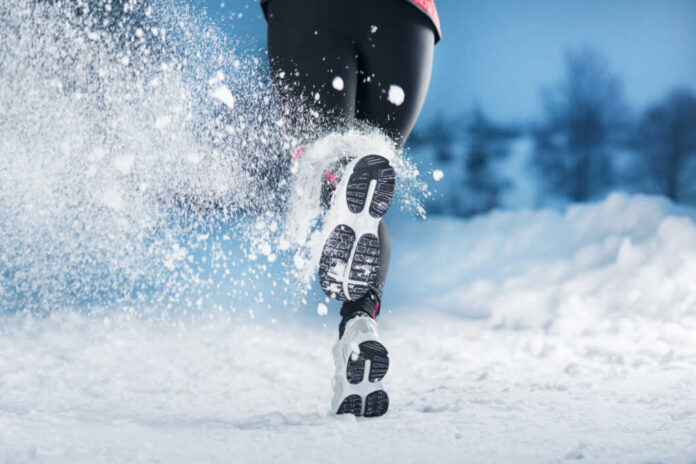
Don’t let the winter weather keep you from exercising.
The days are colder, and the nights are longer, but that doesn’t mean you have to let your fitness goals hibernate for the season.
It just means that you have to be a little more creative and prepared.
While some risks are involved with exercising outdoors in the winter, cold exposure in safe and controlled conditions may help you lose more weight and build more muscle.
Risks of Winter Exercise
Hypothermia occurs when your body temperature drops below 95°F. Mild hypothermia begins with shivering and behavioral changes. If the temperature drops further, dangerous cardiac arrhythmias, severe bradycardia, and ventricular fibrillation can result.
Frostbite occurs when parts of your body freeze, most commonly, the nose, ears, fingers, and toes. Early recognition and getting out of the cold as soon as possible are crucial to survival and long-term recovery in cases of frostbite and hypothermia.
Cold weather makes you less flexible, and the sidewalks may be icy and slippery, increasing the risk of falling or pulling a muscle.
It’s not just the temperature you need to pay attention to, but also the wind and the wetness. Wind or movement on a bike or running can blow away your warmth.
Exercising Safely in the Cold
You can keep warm, dry, and safe while exercising in the cold by dressing in layers.
Start with a layer of synthetic wicking material, such as polypropylene. Cotton will retain water, creating the possibility of hypothermia, so you need a material that will pull sweat away from your body.
Then, put on an insulating layer of fleece or wool to trap heat and keep you feeling warm.
Finally, put on a water-resistant outer layer to protect you from wind, rain, and snow.
If you feel overheated, take off a layer or open up the front of your jacket. If you feel too cold, put on another layer or wrap a scarf around your neck.
Wear gloves to keep your hands warm. Make sure your shoes have good traction in case of ice and are big enough to fit thick socks.
Ensure that all your clothing fits well – not too tight and not too loose. It needs to provide enough room for you to move comfortably without restricting blood flow, breathing, or causing any other inconvenience.
Even though it’s cold and cloudy, it’s still essential to wear sunscreen. You might not see or feel the heat of the sun, but those dangerous UV rays are still there and can damage any exposed areas of your skin.
If you can’t or don’t want to go outside, and the weather is stopping you from driving to the gym, find some exercises that you can do in your living room.
As long as you stay aware of the risks, take precautions, and look for ways to stay active at home, there’s no reason that the winter season should stop you from reaching your fitness goals.






















